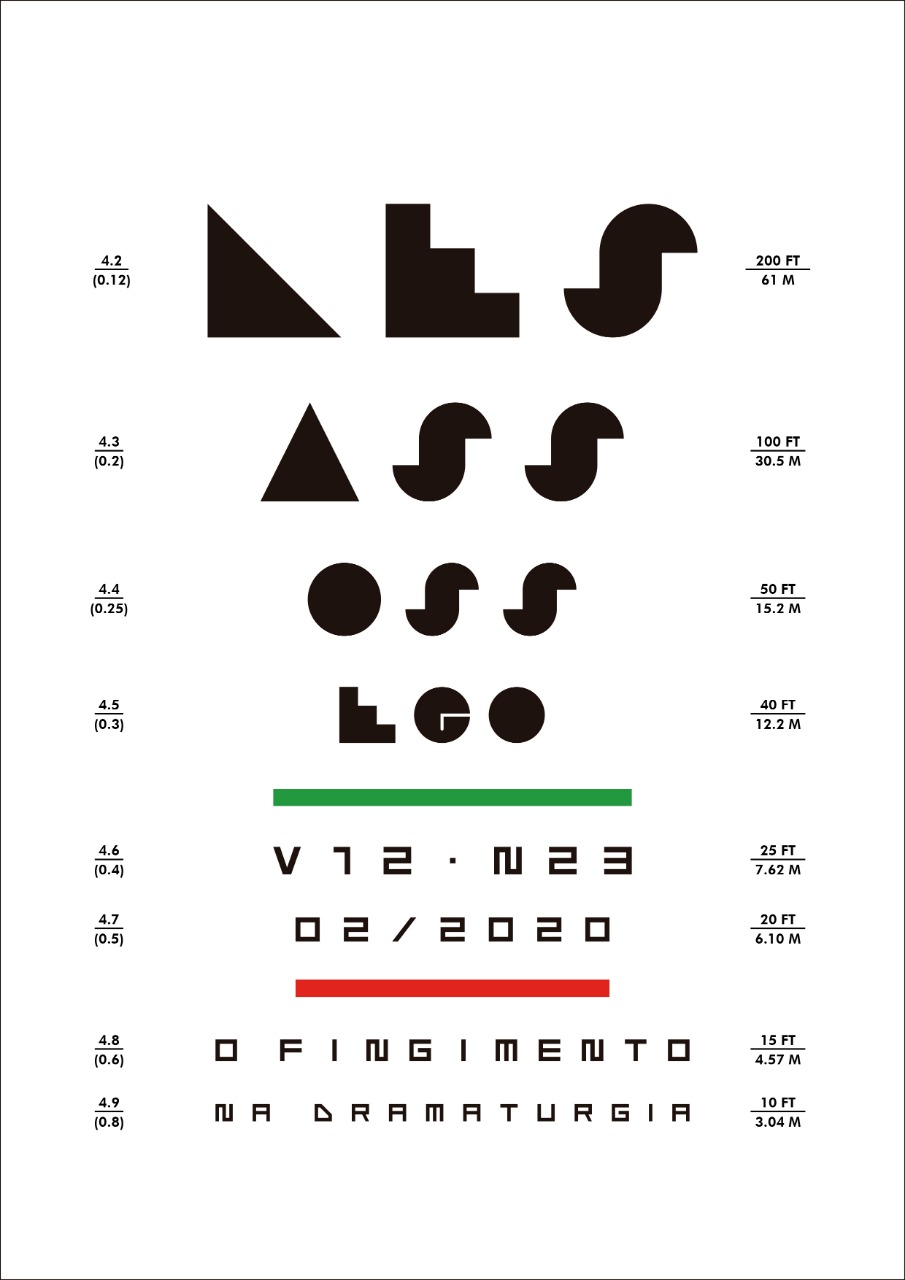Feminist perspectives on the persecution of witchcraft in Bernardo Santareno's "O crime de Aldeia Velha"
DOI:
https://doi.org/10.11606/issn.2175-3180.v12i23p63-79Keywords:
Bernardo Santareno, Witch, FeminismAbstract
Inspired by the real-life case of a girl who was burnt alive in Soalhães, in northern Portugal, in the 1930s, Bernardo Santareno’s O crime de Aldeia Velha (1959) stages the persecution of a young woman by the female members of the rural community in which she lives. Accused of being a witch who is possessed by the devil, Joana will ultimately be burnt to death on a pyre supposedly lit in the hopes of delivering her from evil. The objective of this study is to analyse this play in the light of feminist theories developed from the 1960s onwards regarding the persecution of witches. In so doing, we aim to identify points of contact between these theories and Santareno’s play, as well as the particularities of the Portuguese dramatist’s vision of the underlying questions of gender in supposed cases of witchcraft. Special attention will be paid to the specific implications of the setting of Santareno’s play – a mid-twentieth-century Portuguese village – insomuch as it diverges notably from the focus of the aforementioned theories, which, for the most part, were developed in northern Europe and the United States, and concern themselves primarily with the proliferation of witch trials in these regions in the early modern period.
Downloads
References
BESSA-LUÍS, Agustina. A sibila. Lisboa: Relógio D’Água Editores, 2017.
BRANCO, Camilo Castelo. A bruxa de Monte-Cordova. Lisboa: Parceria António Maria Pereira, 1904.
DALY, Mary. Gyn/ecology: the metaethics of radical feminism. Boston: Beacon Press, 1978.
DWORKIN, Andrea. Woman hating. New York: Plume, 1974.
FEDERECI, Silvia. Calibã e a bruxa: mulheres, corpo e acumulação primitiva. Tradução do Coletivo Sycorax. São Paulo: Editora Elefante, 2017.
KRAMER, Heinrich; SPRENGER, James. O martelo das feiticeiras. Tradução de Paulo Fróes. Rio de Janeiro: Editora Rosa dos Tempos, 2004.
MICHELET, Jules. La sorcière. Paris: Gallimard, 2016.
MILLER, Arthur. The crucible. Londres: Penguin, 2000.
MURRAY, Margaret Alice. The witch-cult in Western Europe: a study in anthropology. Oxford: Oxford University Press, 1921.
RANDALL, Anne Frances. A letter to the women of England on the injustice of mental subordination – with anecdotes. Londres: T.N. Longman and O. Rees, 1799.
SANTARENO, Bernardo. O crime de Aldeia Velha. Silveira: E-Primatur, 2017.
SANTARENO, Bernardo. Obras completas, 1º vol. Lisboa: Caminho, 1984.
SANTARENO, Bernardo. Obras completas, 2º vol. Lisboa: Caminho, 1985.
SANTO, Moisés Espírito. A religião popular portuguesa. Lisboa: Assírio & Alvim, 1990.
SEMPRUCH, Justyna. Fantasies of gender and the witch in feminist theory and literature. West Lafayette: Purdue University Press, 2008.
SZACHOWICZ-SEMPRUCH, Justyna. “The witch figure in nineteenth- and twentieth-century literature” In: DILLINGER, Johannes (ed.). The Routledge history of witchcraft. Abingdon: Routledge, 2020. p. 370-381.
Downloads
Published
Issue
Section
License
Copyright (c) 2020 Robin Driver

This work is licensed under a Creative Commons Attribution-NonCommercial 4.0 International License.
O(s) autor(es) declara(m) automaticamente ao enviar um texto para publicação na revista Desassossego que o trabalho é de sua(s) autoria(s), assumindo total responsabilidade perante a lei nº 9.610, de 19 de fevereiro de 1998, no caso de plágio ou difamação, obrigando-se a responder pela originalidade do trabalho, inclusive por citações, transcrições, uso de nomes de pessoas e lugares, referências histórias e bibliográficas e tudo o mais que tiver sido incorporado ao seu texto, eximindo, desde já a equipe da Revista, bem como os organismos editoriais a ela vinculados de quaisquer prejuízos ou danos.
O(s) autor(s) permanece(m) sendo o(s) detentor(es) dos direitos autorais de seu(s) texto(s), mas autoriza(m) a equipe da Revista Desassossego a revisar, editar e publicar o texto, podendo esta sugerir alterações sempre que necessário.
O autor(s) declara(m) que sobre o seu texto não recai ônus de qualquer espécie, assim como a inexistência de contratos editoriais vigentes que impeçam sua publicação na Revista Desassossego, responsabilizando-se por reivindicações futuras e eventuais perdas e danos. Os originais enviados devem ser inéditos e não devem ser submetidos à outra(s) revista(s) durante o processo de avaliação.
Em casos de coautoria com respectivos orientadores e outros, faz-se necessária uma declaração do coautor autorizando a publicação do texto.
Entende-se, portanto, com o ato de submissão de qualquer material à Revista Desassossego, a plena concordância com estes termos e com as Normas para elaboração e submissão de trabalhos. O não cumprimento desses itens ou o não enquadramento às normas editoriais resultará na recusa do material.
Funding data
-
Coordenação de Aperfeiçoamento de Pessoal de Nível Superior
Grant numbers 001


